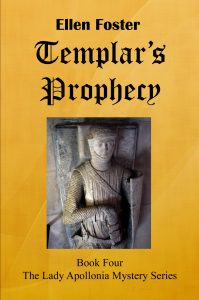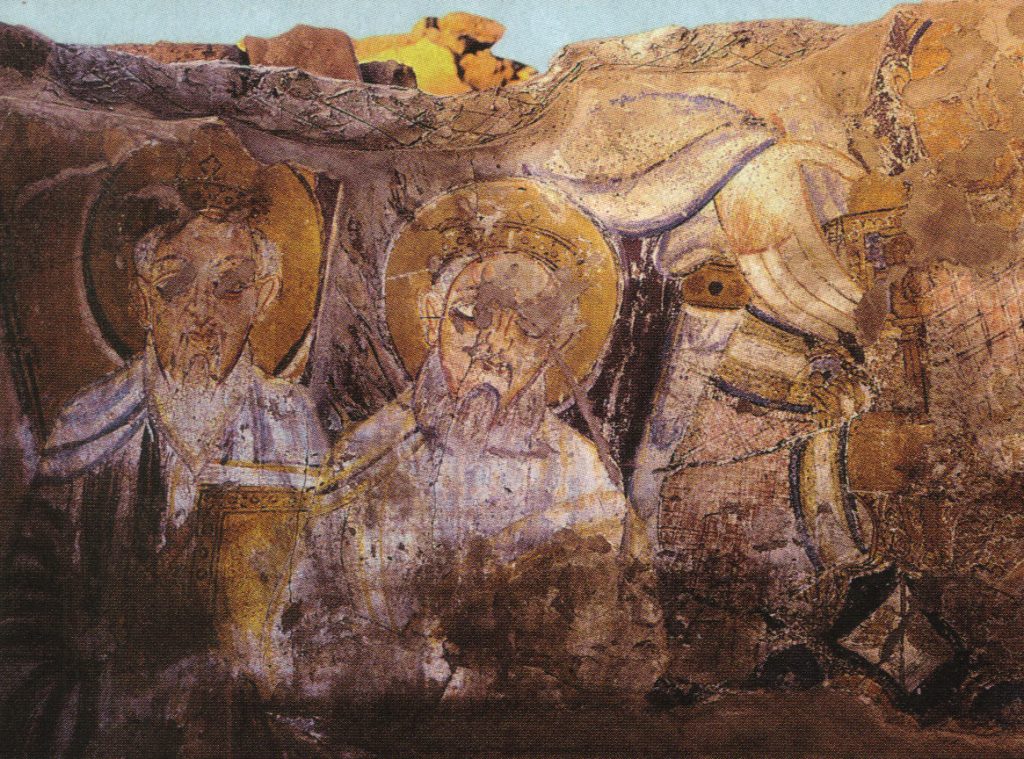Perhaps the most exotic setting that occurs in my Lady Apollonia West Country Mysteries is found in my fourth book, Templar’s Prophecy, the cover of which is shown on the left. The prologue is set is Nubia in the middle of the 14th century. Why such a place and time for my prologue? I begin my 2021 posts by lifting topics from Templar’s Prophecy, to answer these questions.
In each of my seven books, I have tried to include some features of medieval life that are unfamiliar to our contemporary existence. The Templar brotherhood was an important monastic movement in England and continental Europe until the early 14th century when it was banned by the French king. To bring medieval Templars into one of my stories, I had to find a way to bridge the beginning of the 14th century, when the Templars were disbanded by the French king, with AD 1395, the time of Templar’s Prophecy.
My interest in archaeology also provided me an excellent idea. In one of my Archaeology Magazines, I found an article about a dig in Sudan, which in the Middle Ages was called Nubia. It revealed the existence of an important Christian church which had been a healing center and sight of pilgrimage until later in the 14th century when the area was converted to Islam. I decided to use this Church of Raphael the Archangel in Banganarti in the Kingdom of Makuria, Nubia in AD 1350, as the first setting for my story, Templar’s Prophecy. It had been a famous healing center in the fourteenth century of which an archaeological reconstruction from the magazine Archaeology is shown below.
To provide the link between the Templars who no longer existed in 1350 with my story, set in AD 1395 in Cirencester, I have created two new fictional characters: Hugh de Farleigh, a Templar from a family of knights in Cirencester who was captured by the Mamelukes at the fall of Acre in 1291 and sold to a Nubian Christian as a slave, and Benesec Raphael de Farleigh, his grandson, a boy in 1350 in Nubia who comes as a mature adult to Cirencester, the ancestral home of the de Farleigh’s, in 1395 to play a role in my story as a physician.
The prologue to Templar’s Prophecy tells the story of Martin Harlech, another resident of Cirencester, whose life has been so plagued by diseases of the skin that he has sought relief through pilgrimages to a variety of favorite medieval sites including Santiago de Compostela and Rome. Finally, his desperation takes him to Banganarti, Nubia, in Africa in AD 1350 to visit the healing center at the Church of Raphael the Archangel. Although this Englishman from the West Country of England is unfamiliar with the languages that he encounters in Nubia, he does begin to experience relief from his disease which he fears is some form of leprosy.
After many weeks of healing, he is also amazed to encounter a person with an English voice from the West Country who is Hugh de Farleigh, an aged Templar captured and sold into slavery a half century earlier. Harlech is befriended by de Farleigh and becomes acquainted with de Farleigh’s family, including his Nubian wife, son, and young grandson Benesec Rafael. The latter has inherited Hugh de Farleigh’s blue eyes but shows the African ancestry of his Nubian parents and paternal grandmother in his black skin.
Benesec Raphael de Farleigh, Hugh’s grandson comes to Cirencester 45 years later to explore his de Farleigh ancestry, but finds his dark skin is immediately noticed suspiciously by the locals. The Lady Apollonia who is living in Cirencester at the time, finds this stranger from Africa a well-educated and fascinating friend. Benesec’s African training as a physician is an asset which enabled me to have him play a role in my West Country story.
The illustration below is a medieval rendering of Saint Raphael in the church where it was discovered in the archeological dig in Sudan.
My next post will begin exploring the history of Cirencester where Templar’s Prophecy is set.


